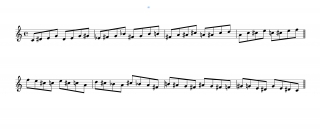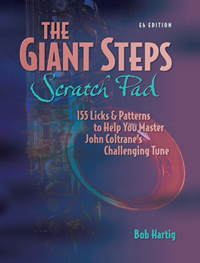Sometimes you just gotta do it.
I’m talking about those times when you’re just not into practicing your horn. You wet the reed, you assemble your instrument, but the inspiration just isn’t there. The fun, the energy, the focus–missing.
But not the motivation. Not, at least, if it’s in the right place. If you’re driven largely by instant gratification, then you might as well hang up your saxophone for the evening and go eat your yogurt. But if your goal is to improve as a musician, then you practice. Whether you feel like it or not is irrelevant. The woodshed still has wood that needs chopping.
Part of becoming a good musician is a matter of character. Will you discipline yourself–because self-discipline is a choice–to push yourself through those inevitable lackluster sessions? If you do, trust me, it’ll pay off over time, not just in your musicianship but also in the kind of person you become. Good musicianship may be an art, but it’s an art that is matured, in tandem with the soul, by discipline.
Push through a single uninspired practice session and you’ve accomplished something worthwhile. Push through many such doldrum sessions over the months and years and you’ll find that they’ve added up–along with all the great times when practicing came easily because you felt positively on fire–to produce expertise.
Practicing is not like making widgets on an assembly line. Rarely do you wind up with a finished, perfected product at the end of a single session. Rather, saxophone practice is like gardening. It’s all about planting seeds, watering them, fertilizing them, rooting out weeds, and otherwise caring for your garden as the seeds germinate, grow, flower, and bear fruit over the growing season. With patience, eventually you get to enjoy the reward of your diligence.
Remember, it’s a matter of character dressed in the garments of determination and persistence.
And now, if you’ll excuse me, it’s time for me to go practice my sax.
 One of my favorite trumpet players, Freddie Hubbard, had a record called “Outpost.” The cover shows a lone farmhouse out in a wide-open plain with a storm beginning to brew overhead. When you listen to the tracks, you really hear the movement of the storm–the lead-in to it, the calm in the middle, and the conditions afterward.
One of my favorite trumpet players, Freddie Hubbard, had a record called “Outpost.” The cover shows a lone farmhouse out in a wide-open plain with a storm beginning to brew overhead. When you listen to the tracks, you really hear the movement of the storm–the lead-in to it, the calm in the middle, and the conditions afterward.



